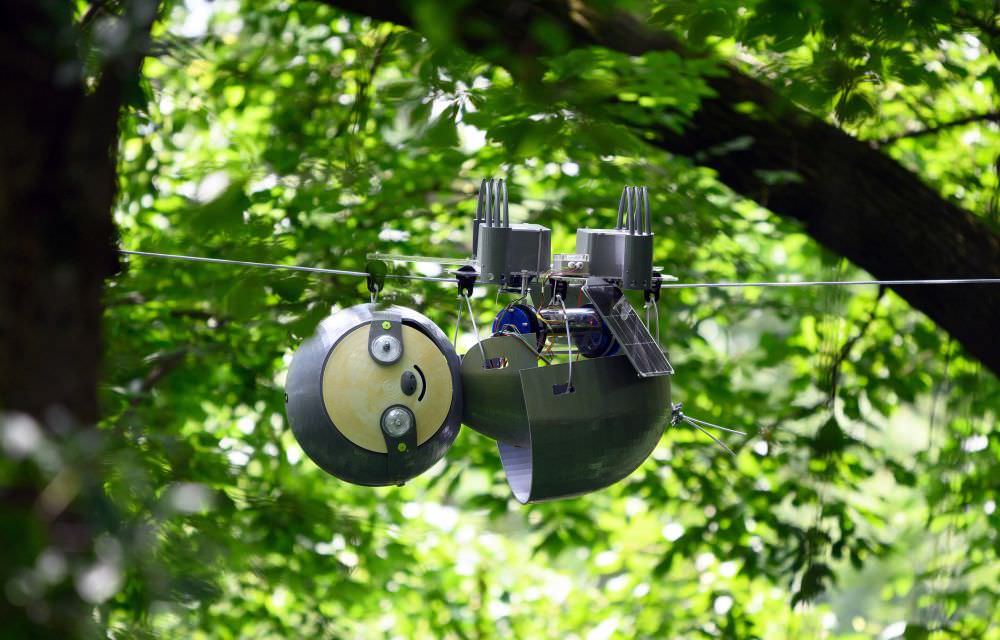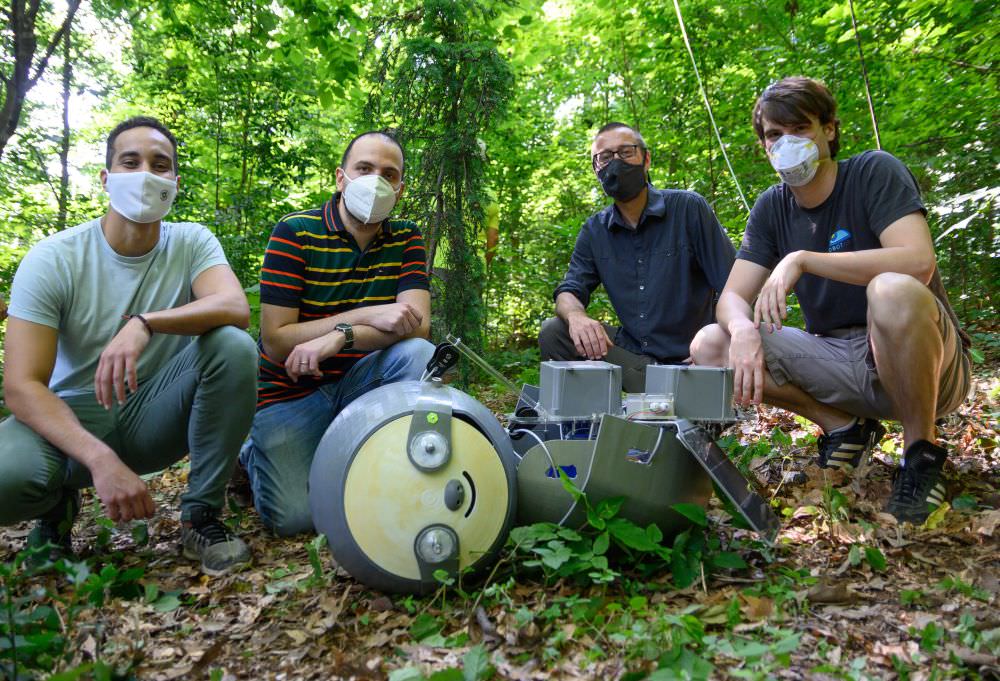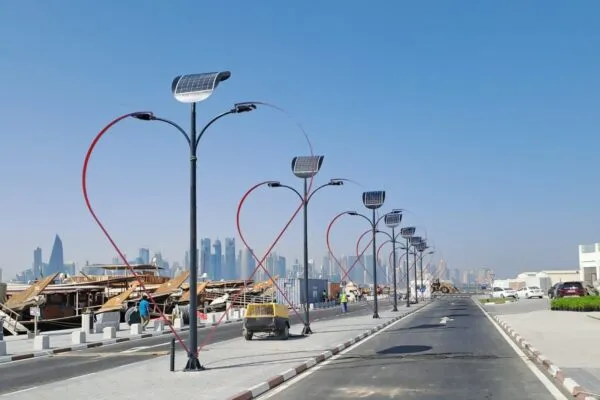SlothBot Hangs Around Monitoring its Surroundings in Atlanta Botanical Garden
Inspired by the low-energy lifestyle of sloths, the robotics engineers at the Georgia Institute of Technology have built a slow-moving SlothBot to monitor its surroundings in Atlanta Botanical Garden.
Powered by solar panels and using innovative power management technology, SlothBot travels along a wire connecting two large trees, while it observes temperature, weather, carbon dioxide levels and other information in the 30 acres of midtown Atlanta forest.

Robotics engineers have built SlothBot to monitor its surroundings in Atlanta Botanical Gardens | Image: Rob Felt/Georgia Tech
Magnus Egerstedt, professor and Steve W. Chaddick School Chair in the Georgia Tech School of Electrical and Computer Engineering, said,
SlothBot embraces slowness as a design principle. That’s not how robots are typically designed today, but being slow and hyper-energy efficient will allow SlothBot to linger in the environment to observe things we can only see by being present continuously for months, or even years.
The 3D printed shell helps shield the three feet long SlothBot’s motors, gearing, batteries, and sensing equipment from the weather. The cute sloth robot is automated to locate sunlight to get its batteries recharged and to move only when required.
SlothBot will operate on a single 100-foot cable at the Atlanta Botanical Garden. But in larger surroundings, it will be able to switch from cable to cable to cover more area.
According to the vice president for conservation and research at the Garden, Emily Coffey, SlothBot will help in collecting data for conservation research on imperiled plants and ecosystems around the world, which will provide aid in finding new and exciting ways to advance the research and conservation goals.

Slow-moving sloth inspired robot moves on a cables strung between two trees | Image: Rob Felt/Georgia Tech
The National Science Foundation and the Office of Naval Research are supporting the project and SlothBot would be providing data to scientists to have a better understanding of the abiotic factors affecting critical ecosystems, providing a new tool for developing information required to protect rare species and endangered ecosystems.
SlothBot would help in the remote research with pollinators, interactions between plants and animals, and other phenomena that are otherwise difficult to observe. The robot will help in preserving the endangered species, and its slow-motion movement helps in detecting the subtle changes and traits of flora and fauna in the surroundings.
Apart from the conservation purposes, SlothBot could be used for precision agriculture, where the robot’s camera and other sensors traveling in overhead wires could offer early uncovering of crop diseases, measure humidity, and look for insect invasion.
After the trials in the Atlanta Botanical Garden, the researchers aim to move SlothBot to South America to observe orchid pollination or to study the lives of endangered frogs there.
Source: Georgia Institute of Technology


